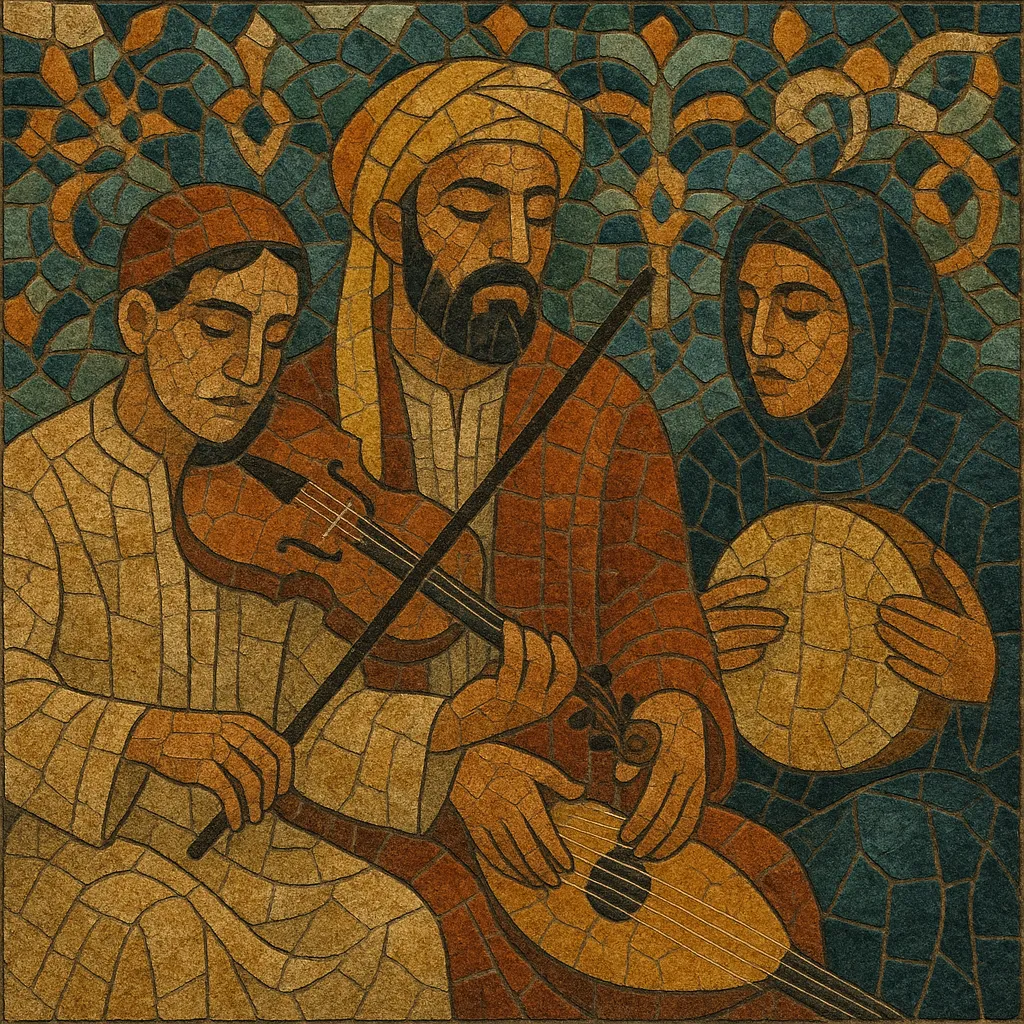Malhun (also spelled Melhoun) is a form of Moroccan sung poetry rooted in urban craft-guild culture and performed in Moroccan Arabic (Darija). At its core are long, strophic qasidas with a single end rhyme, vivid metaphors, and a refrain (harba) that punctuates the narrative.
Musically, malhun is modal (drawing on Maghrebi/Andalusian tab‘/maqam sensibilities) and typically rendered by a solo vocalist with a small ensemble. Common instruments include oud (ud), kamanja (violin played vertically), rebab, nay, and frame and goblet drums such as bendir, taarija, and darbuka. The texture is heterophonic, ornamented, and commonly set in lilting 6/8 or measured 2/4 cycles. Themes range from love and urban life to Sufi devotion and moral reflection, making malhun both a literary and musical art.
Malhun grew from North Africa’s long tradition of vernacular, strophic poetry and performance. In Morocco’s urban centers (notably Fez, Meknes, Marrakech, Taroudant, and the Tafilalt), artisan guilds cultivated poetic forms in colloquial Arabic (Darija), set to melodies that reflected Andalusian classical modal practice. Early master-poets such as Moulay Ahmed El Mdaghri and Abdelaziz Al-Maghrawi established formal conventions—monorhyme qasidas, elaborate metaphor, and a cyclical refrain (harba).
By the 17th and 18th centuries, malhun matured into an urban art with its own performance etiquette and repertory. It absorbed Andalusian rhythmic patterns and modal colors while keeping a distinct vernacular voice. Poet-singers like Sidi Kaddour El Alami expanded the genre’s thematic range—from courtly and mystical love to social satire and praise poetry—while ensembles refined the interplay of solo declamation and choral response.
In the 20th century, masters such as El Haj Houcine Toulali revitalized malhun on stage and record, standardizing ensemble formats and vocal style for broadcast and commercial recordings. Female interpreters, including Zohra El Fassia, helped bring malhun into broader popular awareness, and cultural associations began archiving and teaching canonical qasidas.
Today, malhun is sustained by festivals, conservatories, and associations in Morocco that teach prosody, diction, and repertoire. Contemporary artists and arrangers sometimes fuse malhun texts and cadences with modern instrumentation, while researchers and cultural bodies document manuscripts and oral lineages to preserve the tradition.


